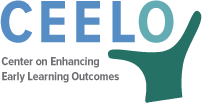Leaders know that perfection is unattainable but it should not be a deterrent to continuously improve program effectiveness and results. The business sector has used continuous quality improvement (CQI) for decades to improve products and services through efforts such as Total Quality Management and Six Sigma. Continuous Quality Improvement is an approach to quality management that builds upon traditional quality assurance methods by emphasizing the organization and systems. It focuses on process rather than the individual and recognizes both internal and external customers. CQI relies on objective data to analyze and improve processes. Education and human services have adapted these approaches for its purposes. CQI is a cornerstone for RBA with many similarities and complementary techniques, and facilitation skills to support continuous improvement efforts are critical for state and local early education leaders at all levels. CQI is not just a skill set or process, however; it is also a mindset.
 Ingredients for Success
Ingredients for Success
Key ingredients are essential to continuously improving results in a disciplined way. These include and overarching vision, skills, incentives, resources, action plans, data, and relationships. The lack of a single ingredient can lead to unintended barriers and unrealized goals. One component not visible in the formula is expressed as the “+” signs between the ingredients. This invisible component is leadership, the force responsible for bringing all elements together.
States have created quality rating and improvement systems (QRIS) in recent years to clarify and encourage local programs to continuously improve their program quality and results. As research and policy continue to evolve in the efficacy of QRIS as a system to produce improved outcomes for young children within the context of different types of programs (public pre-K, child care, Head Start), state and local leaders benefit when they firmly understand the logic behind such systems and ways they can personally influence continuous improvement.
In other situations, state early education leaders rely on rigorous monitoring of programs and program results as part of their efforts to continuously improve services and results. Early education leaders should be knowledgeable about the types of instruments and procedures best suited for monitoring purposes to ensure data are valid for understanding the topic being addressed and connection to continuous improvement planning.
Additional information and resources on Continuous Improvement can be found in the Collective Leadership section of this toolkit.
Resources
- Quality Improvement (HRSA)
- Continuous Improvement in Education (Carnegie)
- A Blueprint for Early Care and Education Quality Improvement Initiatives (ChildTrends, 2015)
- Early Care and Education Quality Improvement (OPRE, 2014)
- QRIS Compendium (BUILD Initiative)
Activities
- Ingredients for Success [MSword]
